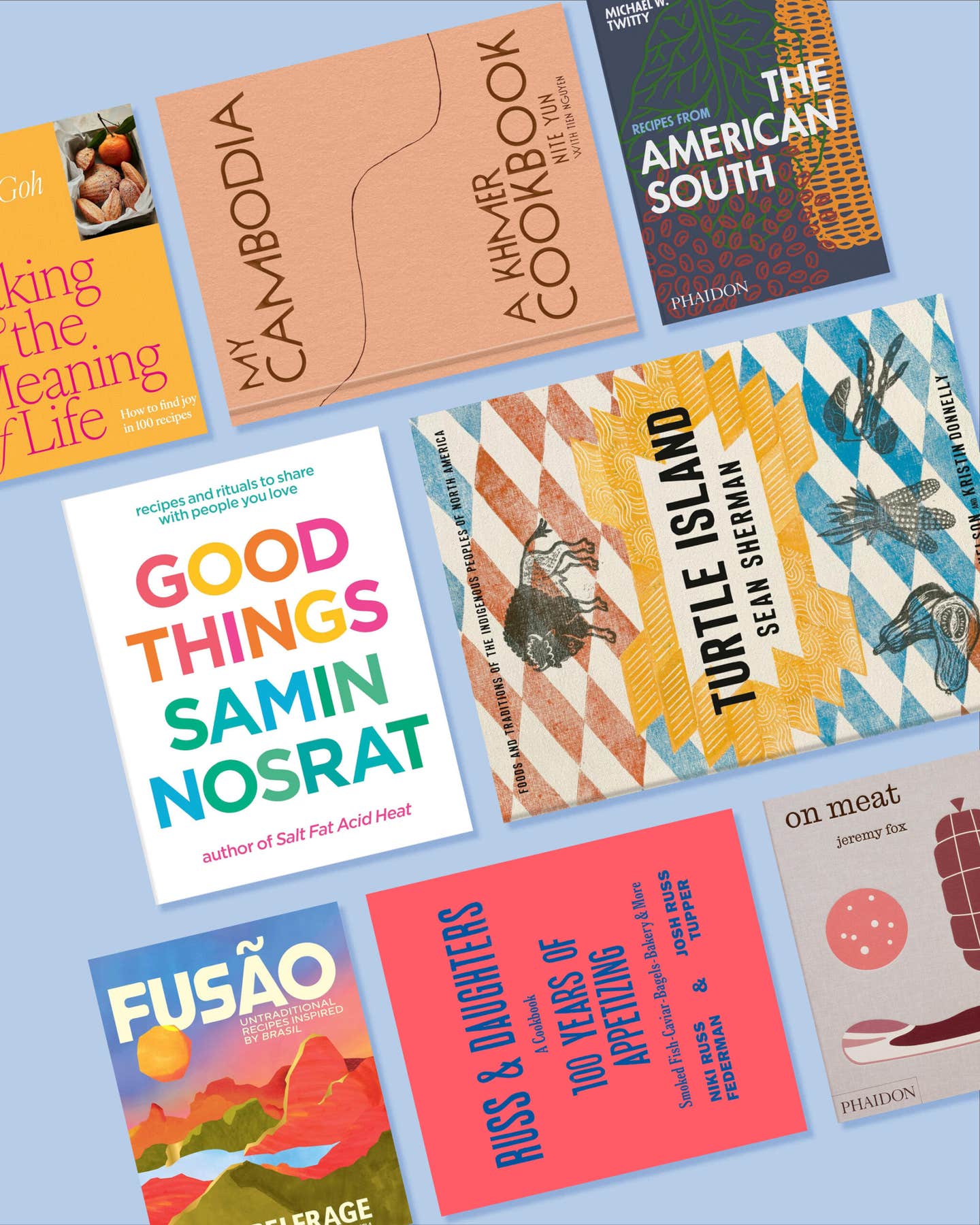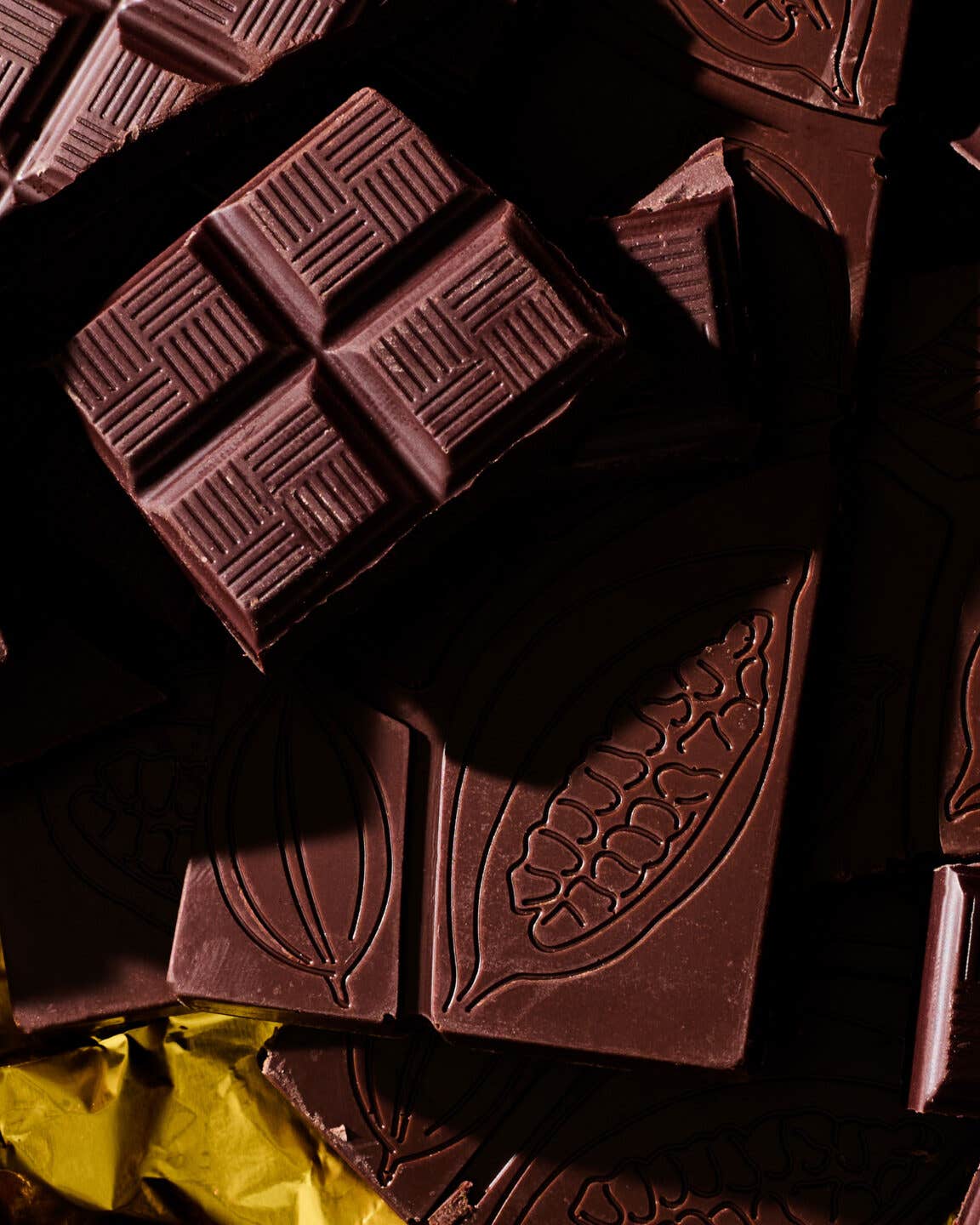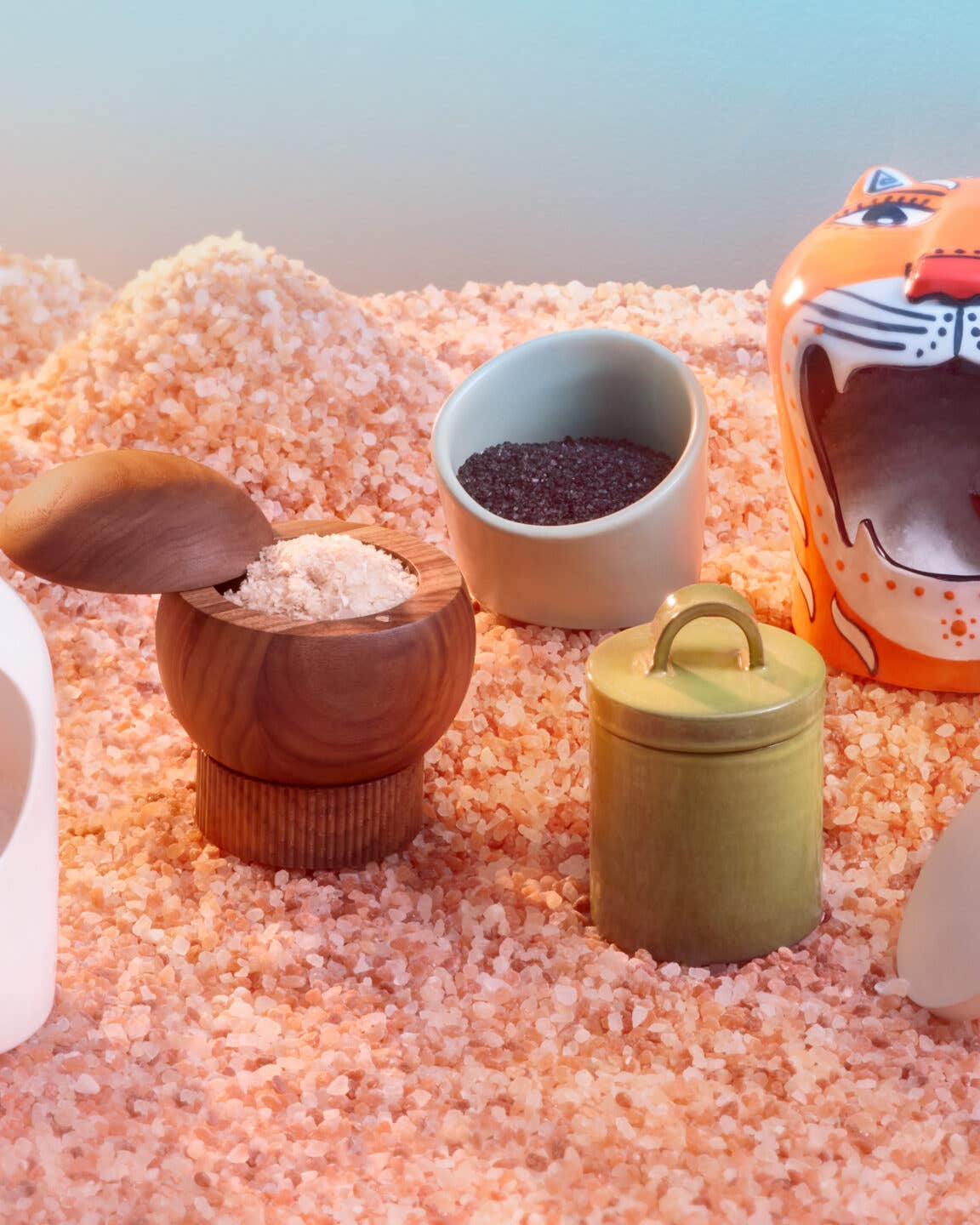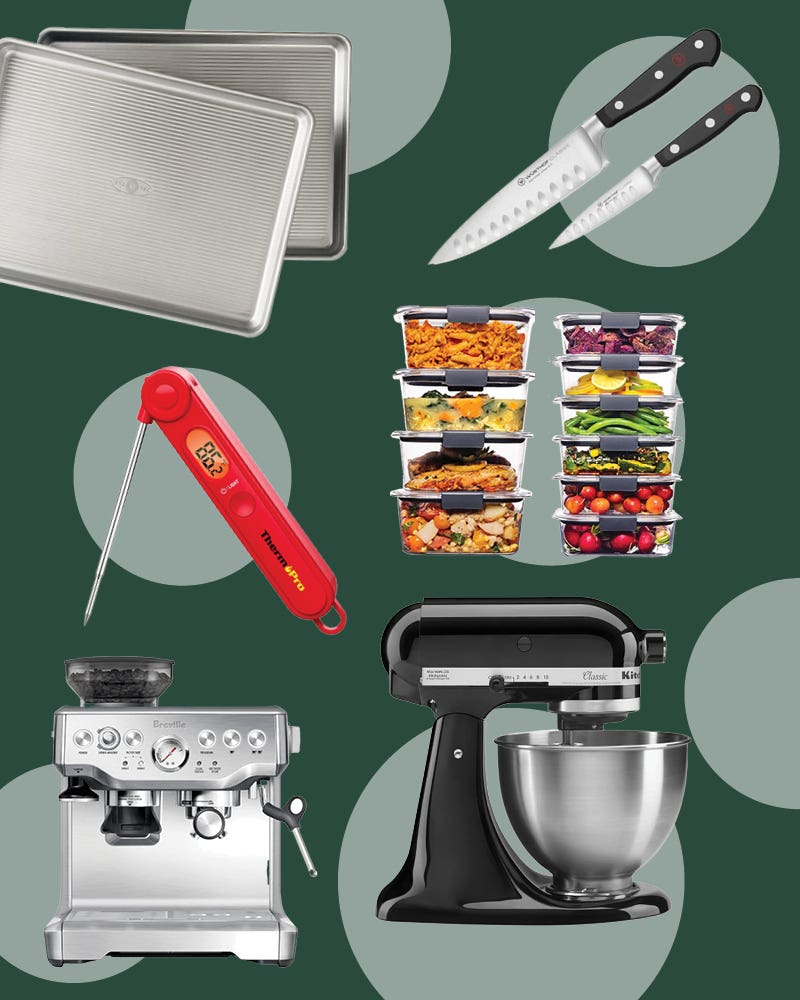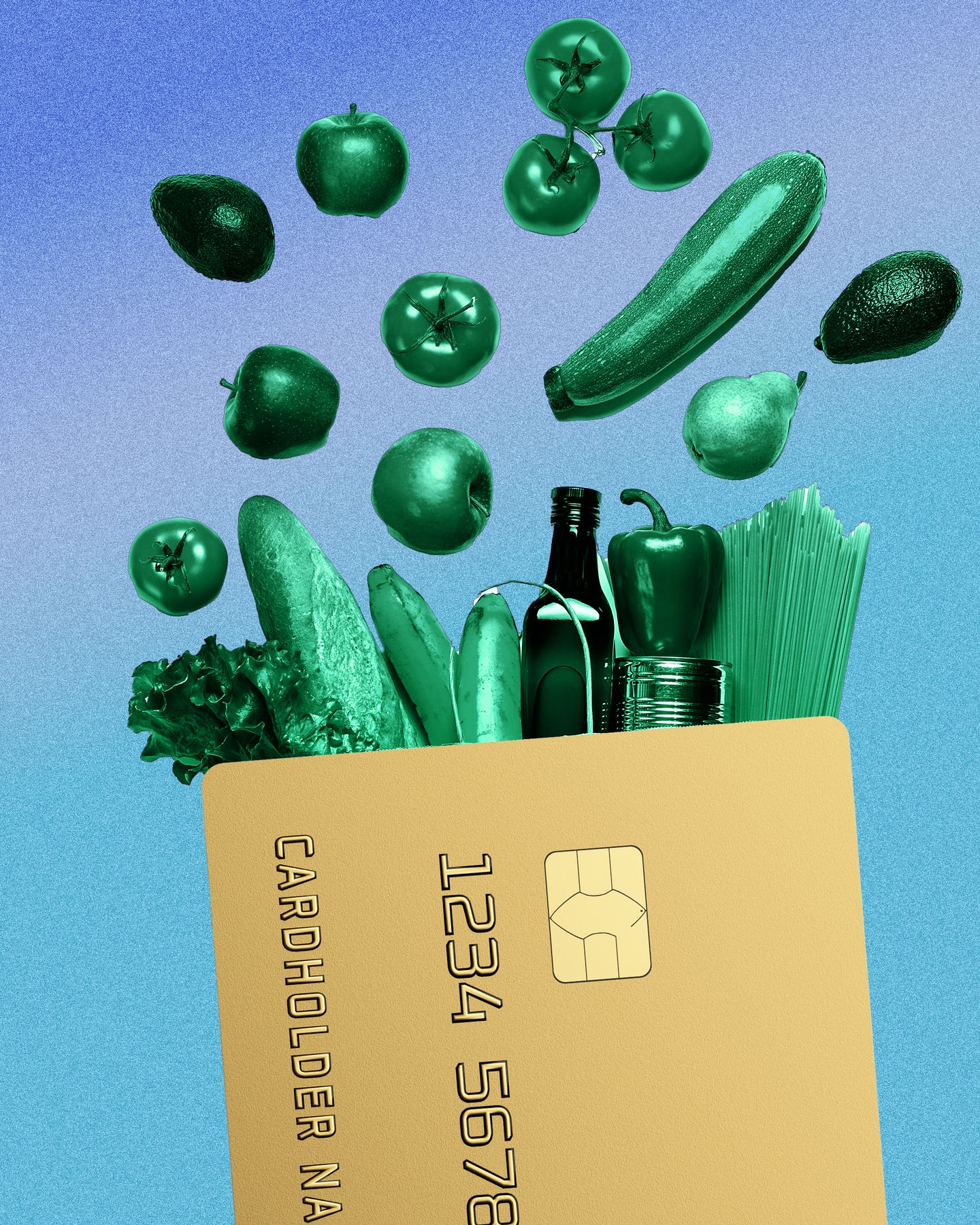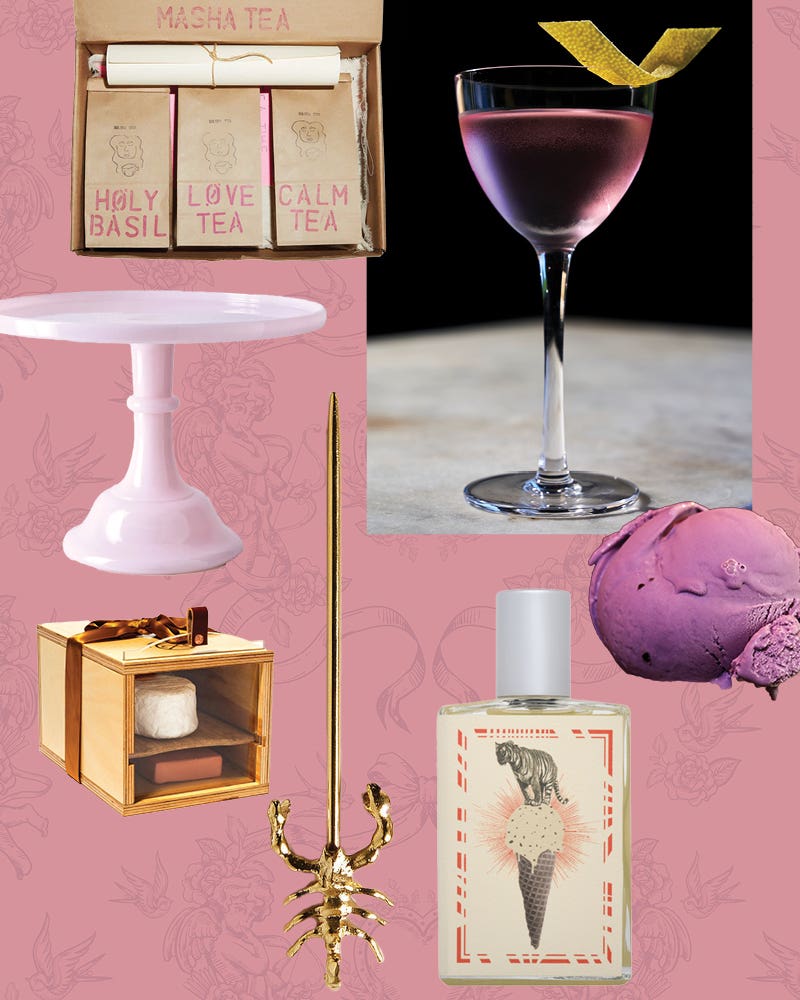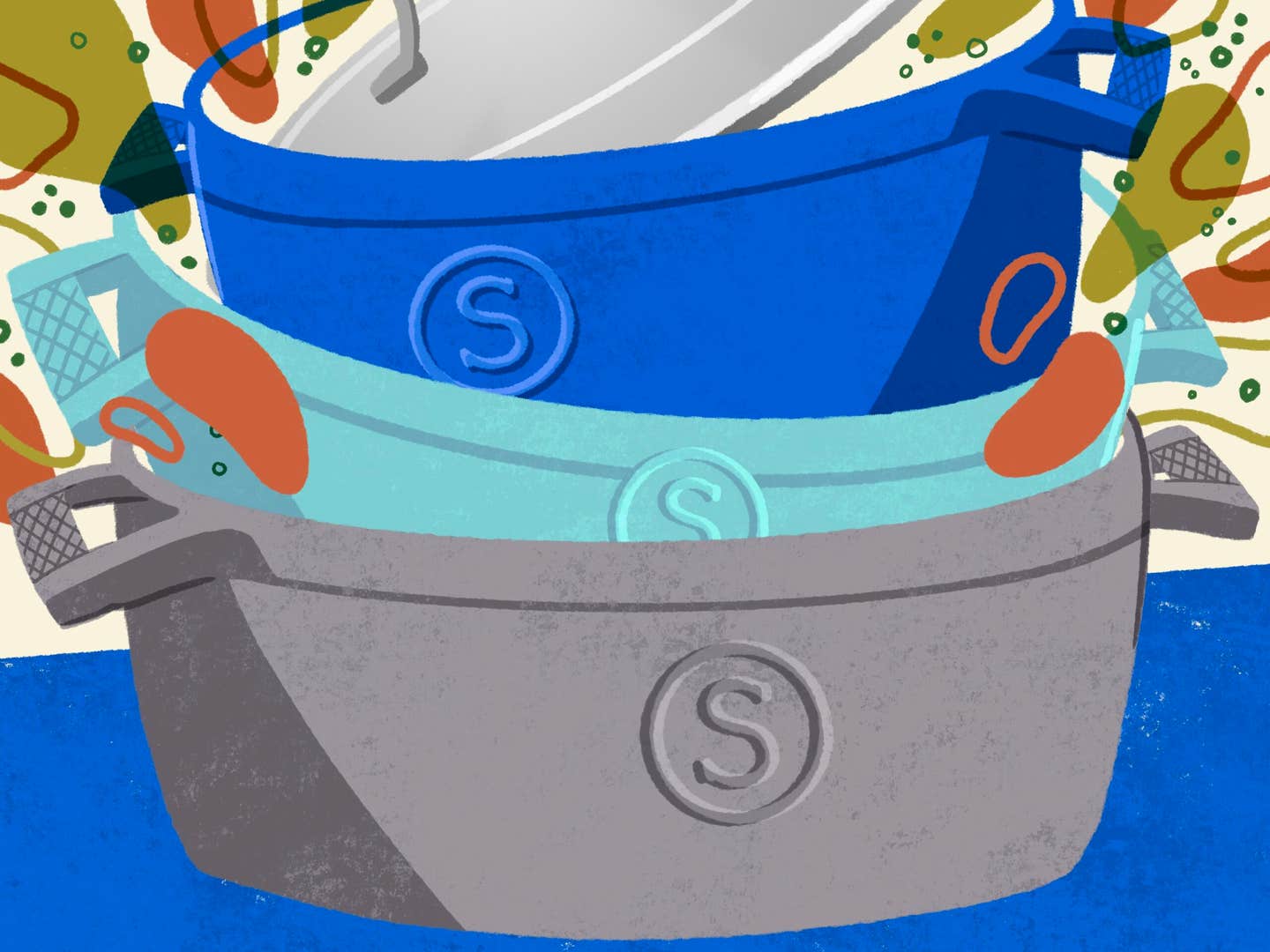
The Right Dutch Oven For You
Because there’s a lot to love about enameled cast iron cookware.
Enameled cast iron cookware doesn’t just look impressive, with multiple cheerful colors to choose from and that slick, new-car-meets-fresh-manicure finish. It’s also low-maintenance and easy to use thanks to its smooth, nonporous surface. Add to that its ability to glide seamlessly from stovetop to oven to table and you’ve got one of the most versatile (and stylish) items in the kitchen.
Whether you’re on the hunt for your very first enameled Dutch oven, or eager to expand your collection, you’re in luck. The SAVEUR Selects Voyage Series has launched a line of enameled cast iron cookware—now available at Macy’s, Kohl’s, Amazon and other retailers. Stick-resistant, rustproof, and non-reactive, these pots combine some of the most desirable functionality in the category, with covetable style to match. Read on for everything you need to know about why and how to use enameled cast iron cookware for the recipes in your regular rotation, and how to choose the right size and shape for your needs.

What exactly is enameled cast iron?
On the inside, it’s the same material your trusty camp skillet or that seasoned Dutch oven inherited from your grandparents is made from, but coated with enamel to create a silky smooth, nonporous surface. A high-quality enameled cast iron pot is definitely an investment purchase, but a worthy one, considering it will get tons of use and last for a long time. You’ll find both round and oval-shaped enameled cast iron cookware: Round styles are more versatile, and heat more evenly on stovetop burners, while oval-shaped pots are useful for cooking roasts (especially whole birds and bone-in cuts) that don’t fit easily into a round vessel.
When not in use, store your enameled cast iron pieces on sturdy shelving or in cabinets, or do like we do and keep your glossy new saucier or roaster displayed right on the stovetop. After all, these are investment purchases you’ll have for years to come, so it’s the sort of kitchen essential that deserves to be shown off.
Questions You Thought Were Too Obvious to Ask about Enameled Cast Iron:

1. What’s the difference between enameled vs. seasoned cast iron?
For starters, enameled cast iron doesn’t need to be “seasoned” like black cast iron. Enameled cast iron also requires less maintenance over the years as it isn’t as prone to rust, and can be washed with plenty of soap.
Acidic ingredients like tomatoes, wine, vinegar, and citrus juice can dissolve trace amounts of uncoated cast iron, resulting in unwanted metallic flavors. In comparison, enameled cast iron is smooth, nonporous, and nonreactive, which makes it far more versatile for a wide range of recipes. Most enameled cast iron pieces fit into standard-sized refrigerators and unlike the seasoned stuff, the material is rust resistant, so you can refrigerate foods right in the pot. This makes reheating leftovers a cinch. (However, due to the cast iron’s considerable weight, only store these pots on the bottom shelf of the fridge.)
2. What are the benefits of cooking with enameled cast iron?
Enameled cast iron offers great heat retention and conductivity, making it ideal for both stovetop and oven use, for everything from braising to deep frying. Plus, you can closely monitor what you’re cooking in enameled cast iron cookware that has light-colored internal enamel so you'll always know when ingredients or sauces are caramelizing, reducing the risk of burning or overcooking.
3. How do you care for enameled cast iron?
Enameled cast iron is extremely easy to care for, but it does require a bit of TLC. You can use plenty of soap and a plastic scrubber to clean your enameled cast iron, but avoid steel wool or metal tools which can scratch that buttery finish.
Know that the enamel coating can chip pretty easily as well, compromising both looks and performance. Handle your enameled cast iron cookware carefully when maneuvering it around the kitchen—don’t slam enameled pots around or stack them precariously in the sink. If nesting multiple pots together, be sure to place a soft kitchen towel between the layers to protect that glossy, vibrant finish.
The enamel lining can also burn, and that’s impossible to fix—low to medium heat is safest with enameled cast iron cookware, and if you do use medium-high to high heat, never preheat pieces while empty and keep a close eye throughout the cooking process to preserve the lining. This will help you to avoid overheating your enameled cast ironware, which can result in scorched interiors: (450°F is the absolute max most pieces can safely handle.)

4. Casserole, Roaster, Braiser, Saucier: What’s the difference between these pots?
Though the whole range is constructed of the same enameled cast iron material, these pieces vary in size and use. A saucier is a smaller option, typically with a capacity under four quarts and with a curved, deep shape that’s great for soups, stews, and pasta dishes. Shallower and wider than a saucier, a braiser is useful for browning meats, roasting, sautéing, and, yes, braising (all that increased surface area allows precious pan sauces to reduce quickly and gently). Both sauciers and braisers work well if you’re cooking for two to four people, or in a small kitchen with limited stovetop and storage space.
Bigger households or weekly meal prep enthusiasts will appreciate a larger enameled cast iron pot. A hefty, straight-sided casserole is a versatile option for cooking much more than just casseroles; it’s useful for whipping up big batches of hearty stew and chili, and for braising more substantial cuts of meal like short ribs, lamb shanks, and chicken thighs. And finally, if you often cook large-format roasts and whole poultry, or are looking to bake loaves of crusty, country-style bread in your enameled cast iron pot, you’ll appreciate a large, oblong roaster.

5. So then what’s a Dutch oven?
A Dutch oven, also called a cocotte (its French name), refers to a heavy pot with a tight-fitting lid. So a Dutch oven can be, and often is, constructed of enameled cast iron, though there are also “naked” or seasoned cast iron Dutch ovens.
6. How do I know what size to get?
Enameled cast iron isn’t one-size-fits-all: certain dimensions are most useful and practical for different folks and kitchens, so think about what kinds of dishes you frequently cook. Most home cooks will want to select a pan with a capacity under six quarts for a host of reasons, including weight and storage space; that’s probably why 5.5-quarts is the top-selling Dutch oven size across well-known brands. This size is ideal for feeding a family of four or more, or for stocking the freezer with pre-portioned leftovers. Also consider your kitchen and food storage set-up: a more petite three- or four-quart pot will be far more manageable in a small (or perpetually packed) refrigerator or atop a compact kitchenette stove.

7. What’s so special about a double-walled lid?
Double-walled lids have nifty design details that can contribute to the overall performance of enameled cast iron cookware. The condensation rings and internal drip ridges on a double-walled lid, like those found in the SAVEUR Selects collection, ensure a secure seal while cooking to lock in moisture and heat, which helps evenly distribute flavor. While some lids are made of enameled cast iron, stainless steel lids like SAVEUR Selects pieces are lighter in weight while still ensuring optimal moisture and heat retention throughout the cooking process.
Keep Reading
Continue to Next Story
